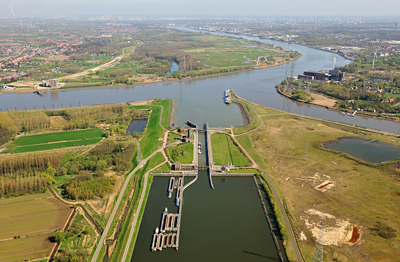News
SPIRAL "UK National Ecosystem Assessment" paper publshed
A new paper has been published based on work carried for SPIRAL, authored by Kerry Waylen and Juliette Young. This paper focuses on the first phase of the UK National Ecosystem Assessment.
Upcoming Event
No upcoming events.
Five strategies to help damaged marine ecosystems recover

The largest investigation to date into the extent of human-induced pressure on European rivers concludes that around 80% of rivers are affected by water pollution, water removal for hydropower and irrigation, structural alterations and the impact of dams, with 12% suffering from impacts of all four.
There is no doubt that human activities have harmed marine environments. Well documented examples include the recent Gulf of Mexico oil spill, which caused significant damage to local ecosystems, and scientists regularly warn of the imminent collapse of European fish stocks. However, there have also been reports of a few conservation success stories where marine populations and ecosystems have recovered from serious degradation, although it is sometimes unclear how long recoveries took, how much of the damage was repaired and what factors helped drive the recovery.
The researchers, partly funded by the EU THESEUS project, identified five strategies for successful recoveries:
- raising public and political awareness,
- legal action and enforcing management plans,
- reducing human impacts,
- protecting or restoring biodiversity and complex ecosystems, and
- long term planning, as recoveries can take many decades, particularly for longer-lived species and complex ecosystems.
They looked at how common recoveries were in marine ecosystems and within different groups of marine animals, how long they took, the magnitude of the recovery and the main drivers. They then identified the direct management actions and indirect social and cultural factors that enabled recoveries to take place, and which could be used by conservationists and policymakers to guide future conservation work.
They found that between around 10 to 50% of marine species and ecosystems showed some sign of recovery, although rarely to former levels of abundance and this was not enough to reverse worldwide declines in conservation status for vertebrates. These recoveries were driven by a range of different factors, often working together. For instance, one previous study had found that 95% of recoveries in estuaries and along coastlines were at least partly the result of reducing or banning exploitation; 72% involved some habitat protection; and 8% involved pollution controls. In 78% of the recoveries, it was the combination of two or more factors, especially reduced exploitation and habitat loss, that enabled recovery.
While reducing human impacts on the environment is important, conservationists and policymakers also need to consider ecological factors, such as ensuring high water quality and suitable habitat is available for recovering populations. Successful recoveries also depend on broader social, political and economic factors. These might include changing cultural perceptions so that local people value and support conservation goals, shifting economic influences to relieve pressure on exploited resources, and legal protection for endangered species. However, recoveries do not tend to fully restore populations or ecosystems. Studies of various marine populations have found that few return to historical levels, and larger declines tend to lead to smaller recoveries.
Recoveries also tended to take longer for longer-lived species and for more complex ecosystems. For instance, many finfish and invertebrate stocks take three to 30 years to recover after depletion and slower-growing corals and sponges can take up to eight years to recover after bottom-trawling has ceased, compared to less than one year for faster-growing polychaete worms. Recovery can also take much longer if a species or ecosystem had been completely lost from an area, and sometimes depends on managed reintroductions to be successful.
Source: Lotze, H. K., Coll, M., Magera, A. M., Ward-Paige, C., & Airoldi, L. (2011). Recovery of marine animal populations and ecosystems. Trends in Ecology and Evolution. 26(11): 595-605.
From: Science for Environment Policy, Issue 271: A service from the European Commission




